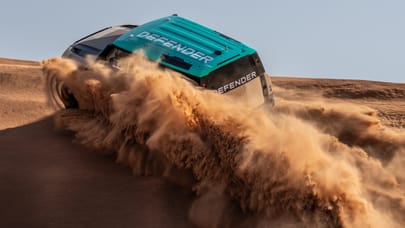
Mythbuster: does a locked differential mean equal torque?
Think a locked diff means a 50:50 torque split? Actually, the opposite is often true...
Myth: locked diff means equal torque
Many people think that a locked differential means a 50:50 torque split. Actually the opposite is often true. Here’s why. I’ll talk about a normal left to right differential, but the same applies to the fore-aft differential when you have 4WD.
The job of a diff is simple: to allow for the different speeds of different driven wheels. Drive around in a circle and the outside wheel goes further than the inside. It does it in the same time, so its speed must be higher. Same in a segment of a circle, aka a corner.
A differential’s job is to make this possible. Both driven wheels get the same torque at the road surface, but rotating at different speeds. That’s the normal state when grip is good.
Now say one wheel spins. Might happen when one of them is on a slippery surface, especially off-road. Or more dramatically, in a corner when you give it too much throttle and the inner smokes up. They’re still getting the same torque, and still one is going faster than the other. The differential is obeying its job description. Thing is, if a wheel is spinning it’s delivering significantly less torque to the surface. So the other one is also delivering a smaller amount of torque than you want.
To get around that you need a differential that’s able to lock, forcing the wheels to rotate at the same speed. That way the one with grip is getting nearly all the torque. As I say, the opposite of an equal split. A differential that locks fully is helpful off-road when one wheel might actually be dangling in the air, but 100 per cent lock is too much on road, so you have a partial lock. Often that degree of lock can be controlled as part of the electronic dynamics programming. Degree of locking and wheel speed and torque split don’t have a simple relationship. The actual grip of each wheel is also part of it.
You don’t need an actual limited-slip differential, although that’s the best solution in petrol cars. The most common, if crudest, substitute is much cheaper: the ESP/ABS sensors can tell if a wheel is spinning, and apply the brake to slow it down. That sends torque to the opposite wheel. In EVs and some hybrids, separate electric motors per wheel can be made to do it much more sensitively, with no differential of any kind.
Top Gear
Newsletter
Thank you for subscribing to our newsletter. Look out for your regular round-up of news, reviews and offers in your inbox.
Get all the latest news, reviews and exclusives, direct to your inbox.
Trending this week
- Car Review
BMW 1 Series








